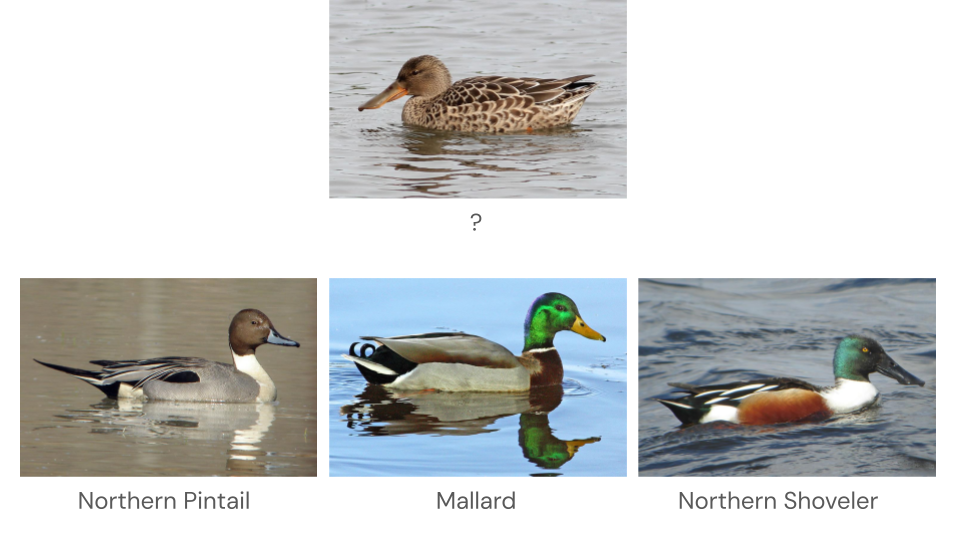Free Preview: Duck and Waterfowl Identification
Enjoy learning how shape can help you determine a tricky ID in this preview from our self-paced, online course, Be a Better Birder: Duck and Waterfowl Identification.
Shape can be a powerful tool when it comes to waterfowl ID! Hear how with friendly instruction from Kevin McGowan.
Shape is also very important for identifying female ducks. Males are typically colorful, but most female ducks are drab and brown. In fact, the way I say is the best way to identify a female duck is to identify the bright male right beside her, the one that is next to her and has the same shape. Seriously, shape and association are the best ways to identify female ducks when you first get started.
Let’s take an example with these two species in which the males are similarly colored: Canvasback and Redhead. They both have red heads, they’re dark on the ends, pale in the middle. But they are shaped very differently. Let’s look just at the silhouettes and we can see the profile of these guys is very, very different, with the Canvasback having this long, slow slope, and the Redhead having a more rounded head with a more prominent forehead.
So here’s a quiz. Here’s the female of one of these two ducks. She’s not colored like them at all; so which one do you think it is? Is this a Canvasback or a Redhead? Look it over a little bit and see what you think. Have you made your guess? It’s a Redhead!
This is actually fairly simple. Most people get this right. It’s a female Redhead: very rounded head and not flat like the Canvasback at all. And here’s a shot I am actually fairly proud of, that has both pairs of these, and the question is who goes with whom? The male Canvasback and the male Redhead are obvious. Can you tell which one is the female Canvasback? Is it the one in the front or the back? Who goes with whom?
I hope you realize that the two in the front are the Redheads and the two in the back are the Canvasbacks. Note a very significant bill shape difference, but also look for other things, let’s think about the rule of three here a second. Notice that the bill colors are kind of the same for the male and female Redheads and same for the Canvasbacks. And note that the Canvasback is brighter in each sex, a little paler than the Redhead. Alright, very good.
Here’s an ID tip to help you with brown female ducks—try using the shape of the bill, head, and body to match her with her mate! See if you can guess which male duck matches the female duck shown in the quiz below. Click the “Next” Button to progress through the quiz.
Duck and waterfowl ID can be intimidating when they gather in large flocks. But this course gives you everything you’ll need to sort out magnificent flotillas of ducks, like this one!

Enroll in Duck and Waterfowl Identification Now!
Thanks for previewing sample content from our self-paced, online course, Be a Better Birder: Duck and Waterfowl Identification. The course is packed full of videos and quizzes like these. You’ll be able to identify ducks and waterfowl with confidence in no time!





